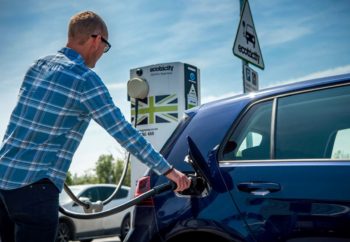The US East Coast has been blanketed in global warming. Layers and layers and layers of it.
But don’t worry: it’s not actually real. We know this because of the climate experts and their computer models. (H/T Tom Nelson)
Here is a learned, peer-reviewed study published in Nature in 2014
In a warming climate, precipitation is less likely to occur as snowfall1, 2. A shift from a snow- towards a rain-dominated regime is currently assumed not to influence the mean streamflow significantly1, 3, 4, 5. Contradicting the current paradigm, we argue that mean streamflow is likely to reduce for catchments that experience significant reductions in the fraction of precipitation falling as snow.
Here is the 2001 IPPC report:
Milder winter temperatures will decrease heavy snowstorms
Here is climate expert Robert F Kennedy Jr in 2008:
In Virginia, the weather also has changed dramatically. Recently arrived residents in the northern suburbs, accustomed to today’s anemic winters, might find it astonishing to learn that there were once ski runs on Ballantrae Hill in McLean, with a rope tow and local ski club. Snow is so scarce today that most Virginia children probably don’t own a sled. But neighbors came to our home at Hickory Hill nearly every winter weekend to ride saucers and Flexible Flyers.
In those days, I recall my uncle, President Kennedy, standing erect as he rode a toboggan in his top coat, never faltering until he slid into the boxwood at the bottom of the hill. Once, my father, Atty. Gen. Robert Kennedy, brought a delegation of visiting Eskimos home from the Justice Department for lunch at our house. They spent the afternoon building a great igloo in the deep snow in our backyard. My brothers and sisters played in the structure for several weeks before it began to melt. On weekend afternoons, we commonly joined hundreds of Georgetown residents for ice skating on Washington’s C&O Canal, which these days rarely freezes enough to safely skate.
Here – lest we forget – is the most-read online story in the history of the Independent.
“Children just aren’t going to know what snow is”.
Meanwhile, in My Little Pony Land, the experts are putting a brave face on things. According to climatologists Michael Mann and Kevin Trenberth, all this snow is definitely a sign of….you guessed it: global warming.
Mann, Director of Penn State’s Earth System Science Center, explained: “There is peer-reviewed science that now suggests that climate change will lead to more of these intense, blizzard-producing nor’easters, for precisely the reason we’re seeing this massive storm — unusually warm Atlantic ocean surface temperatures (temperatures are in the 70s off the coast of Virginia).”
How could we ever have doubted it?
Trenberth, former head of the Climate Analysis Section at the National Center for Atmospheric Research, agrees: “At present sea surface temperatures are more the 3F above normal over huge expanses (1000 miles) off the NE coast and water vapor in the atmosphere is about 10 to 15% higher as a result. Up to half of this can be attributed to climate change.”
Oh, at least.
One thing’s for certain. The US has never, ever seen anything like this before.
Oh, no, wait:
January 28, 1772: This storm was named the Washington and Jefferson Snow Storm since both of their diaries recorded it. The storm left 36 inches of snow (3 feet) in central and northern Virginia and the Washington area. Official weather records did not begin until after the Civil War. Therefore, this storm is not listed as the record, but it was the largest snow for this area ever noted.
March 11-13, 1888: The Blizzard of ’88 was also known as the White Hurricane. The storm began in Washington the morning of March 11 and by evening, the city and surrounding area was an ice-entangled mess with fallen tree limbs, electric lines and downed telegraph poles. The city was completely blacked out with the exception of a few gas lights. On the morning of the 12th, people arose to find a half foot of snow and ice blanketing the city. Winds blew up to 48 mph taking down any utility poles left standing. All communication was cut off to the outside world. It took a week to restore the links and for Washington to find out that Baltimore and New York had been hit even harder. By storms end, New York was buried under 21 inches of snow. Temperatures had been in the single digits and teens and the wind roared at 35 mph with gusts up to 75 mph blowing drifts to 20 feet deep burying some homes and buildings.
The strong northwest winds behind the storm blew so hard that they emptied the Tidal Potomac. Boat builders said that low tide was five feet below normal. Only a small channel down the middle of the river contained water that soon froze. Dust was seen blowing along the dried out riverbed! In Baltimore, the low tides grounded ships at their docks. Without telegraph, officials reverted to sending messages by signal lamps from one old watch tower to another. On the Chesapeake Bay, the water was at its lowest tide on record preventing ships from sailing up it. Most of the craft that were on the bay were driven to shore in the winds causing serious damage or complete loss. At least 40 mariners died, most of which were on oyster dredges that either capsized or were thrown onto the shore. On the coast of Maryland and Virginia, there was flooding that submerged an entire island washing away a large herd of cattle that had been wintering there.
















